|
Displaying items by tag: claude monet
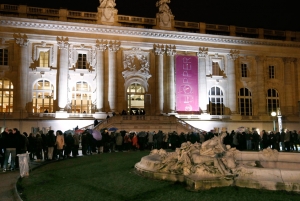
An Edward Hopper (1882-1967) retrospective, which was on view from October 10, 2012 to February 3, 2013 at the Grand Palais in Paris, welcomed a surprising number of visitors during its run. A total of 784,269 patrons visited the exhibition in less than four months, surpassing a blockbuster exhibition featuring the work of long-time Paris resident Pablo Picasso (1881-1973), which ran from 2008-2009 at the same French institution.
To accommodate the high number of visitors, the museum stayed opened around the clock during the show’s final weekend. 48,000 people visited the Grand Palais to catch a final glimpse of the Hopper show, including Jill Biden, the wife of US Vice President, Joe Biden.
The exhibition’s popularity came as somewhat of a surprise to museum officials as the American realist painter and printmaker has never drawn such a crowd in the United States. While he came close, Hopper was unable to surpass the popularity of the 2010-2011 Claude Monet (1840-1926) retrospective, which saw 913,064 visitors.
Hopper, who didn’t sell his first painting until he was 40, has grown considerably in popularity since his death at 85. Wildly successful exhibitions in Madrid, London, Milan, and Rome, which took place before Hopper’s show at the Grand Palais are a testament to the artist’s continued relevance.

On January 23, 2013, a three-judge federal appellate court in California heard arguments from the heirs and relatives of a prominent Hungarian art collector. The lead plaintiff, David de Csepel, is the great-grandson of Jewish banker Baron Mór Lipót Herzog whose legendary art collection once included works by El Greco (1541-1614), Anthony van Dyck (1599-1641), Diego Velázquez (1599-1660), Pierre-Auguste Renoir (1841-1919), and Claude Monet (1840-1926).
The case, which could be the last major art restitution case relating to the Holocaust, involves 40 artworks valued at $100 million that were seized by Nazis during World War II. Csepel argued that Hungarian courts acted unjustly as they have never returned the stolen paintings nor paid restitution to Herzog’s relatives. In fact, a number of paintings once belonging to Herzog remain in the collections of Hungarian museums.
The lawsuit is attempting to use U.S. courts to press charges against the Hungarian government, three of the country’s museums, and a university. However, the Hungarian government’s lawyers argue that U.S. courts have no jurisdiction on foreign soil, pushing to have the case played out in Hungarian courts or the International Court of Justice. The plantiff’s attorney, Michael Shuster, claims that the case is relevant for U.S. courts because most of the living heirs involved in the case are U.S. citizens and that Hungarian courts can be problematic.
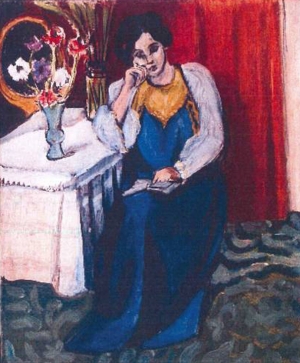
Romanian authorities have arrested three suspects relating to an art heist at the Kunsthal museum in the Netherlands. The robbery, which occurred October 16, 2012 at around 3AM, was the biggest art theft in two decades in the Netherlands. The stolen works include masterpieces by Pablo Picasso (1881-1973), Claude Monet (1840-1926), Henri Matisse (1869-1954), and Paul Gauguin (1848-1903) and are believed to be worth between $66 million and $266 million. The paintings have not yet been recovered.
While little is being revealed about the arrests or the suspects, it has been reported that three men are being detained for 29 days at the request of prosecutors from the Romanian Directorate for Investigating Organized Crime and Terrorism. The suspects’ involvement is still being explored, but officials believe the stolen works might be hidden in an undisclosed location in Romania.
The seven stolen paintings, which are part of the private Triton Foundation collection, include Picasso’s Harlequin Head (1971); Monet’s Waterloo Bridge, London and Charing Cross Bridge, London (1901); Matisse’s Reading Girl in White and Yellow (1919); Gauguin’s Girl in Front of Open Window (1898); Meyer de Haan’s (1852-1895) Self Portrait (circa 1890); and Lucian Freud’s (1922-2011) Woman with Eyes Closed (2002). The Triton collection, which was assembled over the course of 20 years, includes more than 150 works of modern art ranging from the 19th century to the present day and spans a number of important art movements.

Between 1938 and his death in 1956, G. David Thompson, a steel tycoon and passionate art collector made a number of sizable donations to his alma mater, Peru High School in Indiana. Thompson’s generous gifts were in honor of his art teacher, John Whittenberger, who inspired the former troublemaker to change and his ways and helped set him on the path that led to his eventual success.
Thompson graduated from Peru High School in 1913 and established his own investment banking company in Pittsburgh during the Great Depression. By 1945, he was at the helm of four steel companies in the city. With ample funds, Thompson became a fervent art collector, often buying works by unknown artists who went on to become quite established. His multi-million dollar collection included works by Paul Klee (1879-1940), Georges Braque (1882-1963), Claude Monet (1840-1926), Henri Matisse (1869-1954), Jackson Pollack (1912-1956), Piet Mondrian (1872-1944), Paul Cézanne (1839-1906), Vincent van Gogh (1853-1890), Alberto Giacometti (1901-1966), and Edgar Degas (1834-1917).
While Thompson made a number of donations to major museums, he ultimately gifted 75 paintings and prints, one sculpture, and 54 pieces of oriental pottery to Peru High School. The exhibition Hidden Treasures: The John Whittenberger Collection of G. David Thompson at Peru High School at the Fort Wayne Museum of Art features a portion of the dozens of works Thompson sent to Whittenberger. Works on view include pieces by William Merritt Chase (1849-1916), Salvador Dalí (1904-1989), and Pablo Picasso (1881-1973). Hidden Treasures is on view through February 24, 2013.
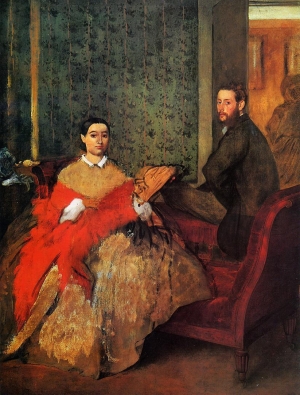
Patrons who are familiar with the permanent collection at Boston’s Museum of Fine Arts might become befuddled upon their next visit to the institution. Some of the museum’s finest works including Pierre-Auguste Renoir’s Dance at Bougival, the pivotal Claude Monet painting, La Japonaise: Camille Monet in a Japanese Costume, five works by Paul Cézanne, five more by Edouard Manet, and two of the masterpieces by Vincent Van Gogh are nowhere to be found.
While some of the works have been lent to museums in the United States, Japan, and Europe to enhance exhibitions, others have been rented to for-profit organizations. Loans between institutions are common practice, but compounded with the large number of works currently out on rent by the MFA, the museum’s own collection appears to be lacking. Currently, 26 of the MFA’s paintings are involved in exhibitions in Italy, which the institution received a hefty yet undisclosed fee for. Some of the works now on view in Italy are two paintings by John Singleton Copley and two Rembrandt portraits as well as single works by Eugène Delacroix, Paolo Veronese, Winslow Homer, John Singer Sargent, Paul Gauguin, Alberto Giacometti, and Pablo Picasso.
While the MFA is excited to be raising revenues, the act of charging fees for lending works has been a source of controversy. One of the main duties of public institutions, including art museums, is to share their collections with the public. Many objectors find the practice of lending works for profit to be in direct opposition to this goal.
Other major holdings that are not presently at the MFA are Diego Velázquez’s Luis de Gongora, two works by El Greco, two more by Gustave Courbet, the museum’s only painting by Edvard Munch, and arguably its greatest work by Edgar Degas, Edmondo and Therese Morbilli. While MFA officials argue that they are bolstering the museum’s international reputation, critics feel the institution is suffering for it.
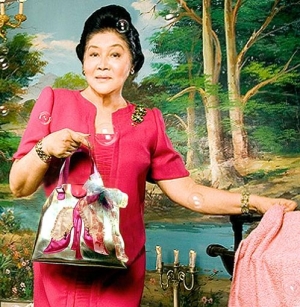
Known for her extravagant shoe collection, one-time Philippine first lady, Imelda Marcos, also accrued an admirable art collection during her late husband’s reign. Marcos’ former secretary, Vilma Bautisa, was indicted on Tuesday, November 20th, on charges of conspiracy, tax fraud, and offering a false instrument for filing, all relating to artworks that had previously belonged to Marcos. 74-year-old Bautista acquired a number of important paintings from Marcos and her husband, Ferdinand, after his regime came crashing down in 1986 after a citizen revolt.
The Manhattan District Attorney hit Bautista, a New York resident, with charges that she was conspiring to sell paintings that were the legal property of the Philippine government. The District Attorney’s office claims that Bautista used false paperwork to sell Le Bassin aux Nymphéas (1899) from Claude Monet’s Water Lilies series in September 2010 for $32 million. The other works in Bautista’s possession are Monet’s L’Eglise et La Seine a Vétheuil (1881), Alfred Sisley’s Langland Bay (1887), and Albert Marquet’s Le Cypres de Djenan Sidi Said (1946). The four paintings involved in the suit once hung in a Manhattan town house used by Imelda Marcos and her husband.
Two of Bautista’s nephews were also charged but did not appear in court. Bautista pleaded not guilty and was released on a $175,000 bond.
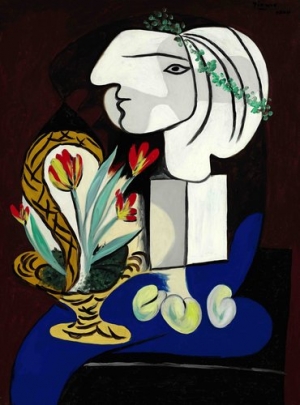
The top sale at last night’s Impressionist and modern Art auction at Sotheby’s in New York was a 1932 painting by Pablo Picasso of his muse, Marie-Therese Walter. The suggestive Nature Morte aux Tulipes, estimated at $35 to $50 million, sold to a phone bidder for $41.5 million.
The sale at Sotheby’s took place just one day after Christie’s lackluster Impressionist and modern art auction and didn’t fare much better than its predecessor. While there were some notable sales, 31% of lots went untouched including mid-level works by Degas and Rodin. While many have been blaming the election and unfortunate weather for the mixed sales, the quality of the work featured has also in question. Many have taken note of the padded sales by both auction houses and during these delicate economic times, buyers want to spend money on exceptional works, not mediocre works by exceptional artists.
On a positive note, there were a number of impressive sales besides the Picasso portrait. Claude Monet’s 1881 landscape Champ de Blé estimated at $5 to $7 million fetched $12.1 million and a photograph of Marcel Duchamp taken by Man Ray sold for $2.4 million, well over it’s $1.7 million high estimate. Another work that exceeded expectations was Fernand Leger’s Les Contructeurs, which went for $1.37 million, more than double its low estimate. The sale brought in $163 million; it was expected to garner about $169 million in total.

Christie’s kicked off their highly anticipated fall auctions with a lackluster Impressionist and Modern Art sale on Wednesday evening. While there were many outstanding circumstances (i.e., Hurricane Sandy, the presidential election, the Dow Jones’ drop) that may have contributed to the sale’s inability to reach its low estimate of $210 million, the auction garnered $204,800,000 but left 21 of its 69 lots unsold. Other factors that may have contributed to the uneven sale were too high estimates and an inconsistence in quality as it was the mid-level works that went without buyers.
The top sales were high with six works selling for over $10 million. Wassily Kandinsky’s early and rare Studie fur Improvisation 8 brought $23 million and a set a record for the artist at auction while just breaking its low estimate of $20 million. Claude Monet’s Nymphaes, a watercolor from his water lilies series, was the evening’s top lot at $43,762,500. Other top lots included Pablo Picasso’s Buste de Femme that sold for $13,074,500, Constantine Brancusi’s white plaster Une Muse that brought $12,402,500, and Joan Miro’s Peinture (Femme, Journal, Chien which fetched $13,746,500.
Sotheby’s sale begins today after three days of delays due to Hurricane Sandy.

Juan Carlos Emden, the grandson of a wealthy Jewish businessman, is demanding that the Swiss Buehrle collection return a Claude Monet painting that the family was forced to sell as they fled Europe during World War II. The masterpiece was sold in haste for a little less than $32,000. The painting today is valued at around $27 million.
Emden is the Chilean grandson of Max Emden who bought Monet’s Poppy Field Near Vetheuil in the 1920s. Max was forced to flee Nazi Germany in 1933 for Ticino, Switzerland, where he built the Villa Emden to house his art collection, including Poppy Field Near Vetheuil, one of Monet’s most famous paintings. After his death in 1940, Emden’s son, Hans Eric Emden, was forced to sell his father’s art collection to finance his fleeing to South America from Europe.
Juan Carlos Emden is rumored to have been fighting for years to regain ownership of his grandfather’s painting and is planning to travel to Zurich to discuss how to recover the work with his lawyers. Poppy Field Near Vetheuil was stolen during a heist at the Buehrle museum in 2008, but it was found several days later.

The Corcoran Gallery, Washington D.C.’s oldest art museum, has been losing money for years and is currently in need of at least $130 million in renovations. The only major museum on the Mall that is privately owned, times have been tough for the Corcoran who must charge admission and raise large amounts of money to survive. Attendance has dropped drastically and donations to the museum have roughly halved since the recession.
The Corcoran’s commanding Beaux Arts façade and top-notch collection of 17,000 works including pieces by Winslow Homer, Edward Hopper, John Singer Sargent, Claude Monet, and Willem de Kooning are simply not a big enough draw to keep the institution afloat, especially when every other institution on the Mall offers free admission. The Corcoran’s board of trustees are currently debating between a number of options to keep the museum active including selling the current building, combining forces with another institution, and moving out of the city.
While many find the loss of the Corcoran will leave the Washington Mall with a gaping hole, the museum announced that they have been discussing possible solutions with the National Gallery of Art, George Washington University, and a few other unnamed institutions. The Corcoran hired a real estate firm as its adviser in September and hopes to have its future mapped out by the first half of 2013.
The District of Columbia Historic Preservation League is looking to extend the landmark designation for the Corcoran’s exterior and interior. If the institution were approved, any major construction would be subject to public review.
|
|
|
|
|